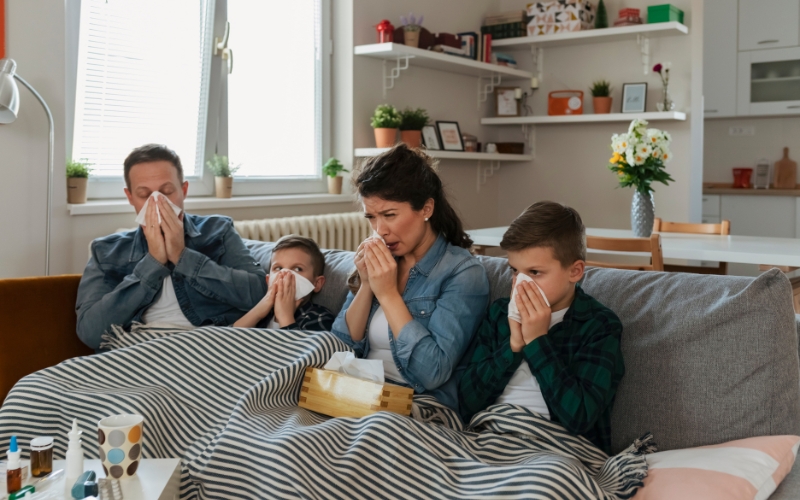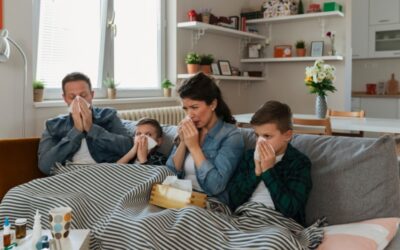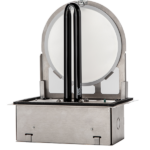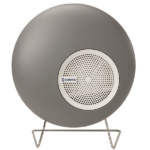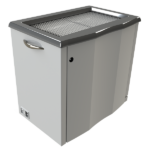Ozone is a molecule composed of three oxygen atoms and is widely known for its presence in the Earth’s atmosphere. There it forms a protective layer that shields us from harmful ultraviolet (UV) radiation. While the ozone high above us is a savior, at the ground level it poses a very serious threat to our health. The dangers of ozone exposure and its adverse effects on human health, the environment, and our overall well-being are very real.
What is ground-level ozone?
This is often referred to as “bad ozone” and is a secondary pollutant formed in the lower atmosphere, primarily through chemical reactions between volatile organic compounds (VOCs) and nitrogen oxides (NOx) in the presence of sunlight. These pollutants are released into the atmosphere from various sources, including automobiles, industrial facilities, natural emissions, and more.
Health Impacts of Ozone Exposure
Respiratory Issues
One of the more significant dangers of ozone exposure is its adverse effects on the respiratory system. Breathing in ozone can irritate the airways, leading to symptoms such as coughing, wheezing, chest tightness, and shortness of breath. For people with pre-existing respiratory conditions like asthma or chronic obstructive pulmonary disease (COPD), ozone exposure can exacerbate these conditions, potentially resulting in severe respiratory distress.
Reduced Lung Function
Long-term exposure to ground-level ozone can lead to reduced lung function, particularly in children and adolescents. Studies have shown that chronic exposure to elevated ozone levels can permanently impair lung development, making it harder for individuals to breathe and engage in physical activities.
Increased Hospital Admissions
On days when ozone levels are high, hospital admissions for respiratory issues, such as asthma attacks, do tend to spike. Individuals with compromised immune systems, including the elderly and children, are at the highest risk of being hospitalized due to ozone exposure.
Environmental Impacts of Ozone Exposure
Crop and Vegetation Damage
Ozone isn’t just harmful to humans but to the environment as a whole as well. High concentrations of ozone can damage crops and vegetation, reducing agricultural yields and forest health. Ozone-induced damage to leaves can limit photosynthesis and stunt plant growth as well.
Harm to Ecosystems
Ozone exposure can disrupt entire ecosystems. It can harm aquatic life by contaminating water bodies and reduce the availability of food sources for various species. Additionally, ozone can weaken trees, making them more susceptible to pests and disease.
Climate Change Implications
Ground-level ozone is a potent greenhouse gas. While it does have a relatively short lifespan in the atmosphere, it contributes to climate change by trapping heat. This further complicates the battle against global warming and its associated consequences.
Vulnerable Populations and Ozone Exposure
Certain populations are more vulnerable to the dangers of ozone exposure.
Children: Children breathe in more air relative to their body size than adults, which makes them more susceptible to the harmful effects of ozone.
Elderly: Aging individuals often have weakened immune systems, which means they’re more prone to ozone-induced respiratory issues.
People with Pre-Existing Conditions: Those with asthma, COPD, or other respiratory conditions are at a higher risk of experiencing exacerbated symptoms when exposed to ozone.
Outdoor Workers: Occupations that require outdoor work, such as construction workers, farmers, and even athletes face an increased exposure to ground-level ozone.
The Synexis® Difference
Synexis devices are all certifiably zero ozone. They’ve undergone rigorous testing by Underwriters Laboratories (UL) and were certified to meet UL2998 for zero ozone emissions. That means that we’re not adding to the problem mentioned above and is a big reason why Synexis devices are the best you can do for your building.
To speak with an IAQ expert from Synexis, fill out this form and we’ll be in touch as soon as possible.
To learn more about Synexis, click here.

